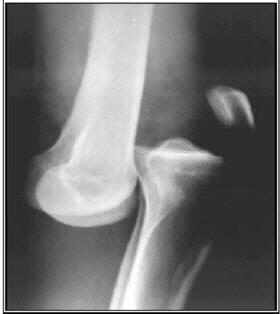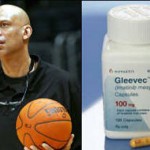1 D’s Niall Horan Recovering from Knee Surgery
Apparently, “The Story of My Life” for One Direction‘s Niall Horan includes years of knee problems, which he recently underwent “major surgery” to repair.
Seen hobbling about on crutches, the 20-year-old Irish singer tweeted to fans:
“Yes I’ve had major knee surgery, a much larger surgery than first anticipated. But i would like to tell u, it was a complete success! Considering the scale of it!”
Sources have reported that Horan has had knee problems since childhood: “Niall has battled this problem since he was a child. His knee dislocates and it is very uncomfortable. He’s had physio sessions for years but the pain persists so surgery is the best solution to have him fully fit and ready for the demands of a long tour.”
Niall’s been seen on crutches on and off the past few years, and in April shared on Twitter that his knee is “always stiff and swollen after shows! But it’s ok I think! But I wear a knee brace all the time”.
One Direction is scheduled to begin their “Where We Are ” tour in South American in late April, followed by a U.S. tour this summer.
What is a “knee dislocation”?
There are two conditions often referred to as a “knee dislocation.”

Complete Knee Dislocation
A true knee dislocation is when the thigh bone (the femur) loses contact with the shin bone (the tibia). This is an uncommon condition and is usually associated with trauma, such as car accidents, sports injuries or severe falls. A partial dislocation is possible. This is referred to as a subluxation, and is due to damage to the knee ligaments. This usually causes a sensation of the knee “giving out,” and will typically “slip back” into position. A complete knee dislocation involves damage to the ligaments of the knee (the anterior cruciate and posterior cruciate ligaments) and can also involve damage to the surrounding blood vessels and nerves.
Much more common than a true knee dislocation is the dislocation of the patella (kneecap). The kneecap lies in a V-shaped groove in the thighbone (femur). As the knee bends, the kneecap slides in that groove. If that groove is too shallow, or uneven, the kneecap can slip out of the groove. This is called a patella subluxation or dislocation (once again depending on how far the kneecap moves out of place), as in the diagram below.
The symptoms of a dislocated patella include:
- The knee looks deformed
- The knee is bent and you can’t straighten it
- The kneecap appears moved to the outside of the knee
- There is pain, tenderness and swelling
- “Sloppy” kneecap — you can move the kneecap too much from right to left (hypermobile patella)



























0 comments